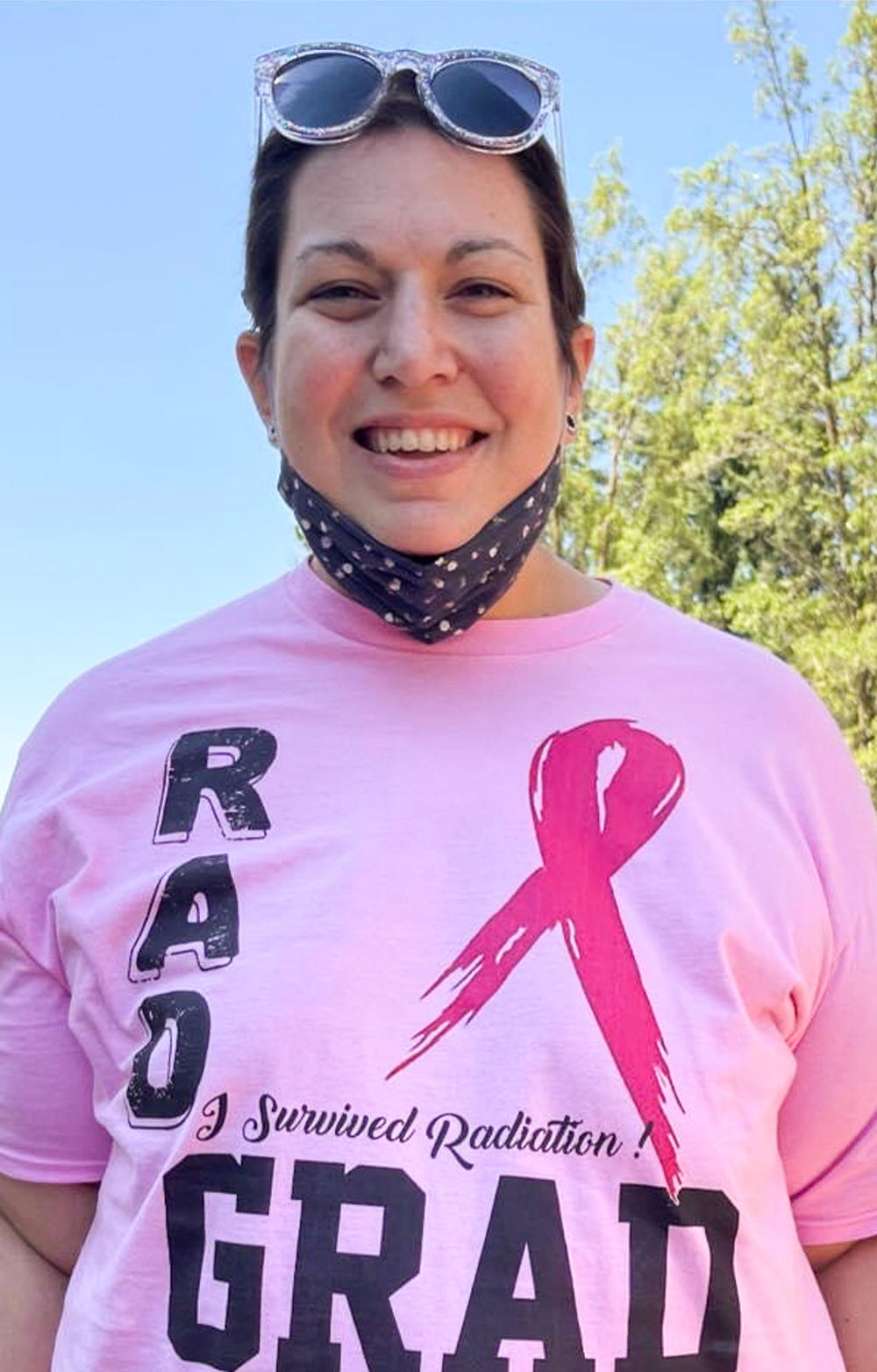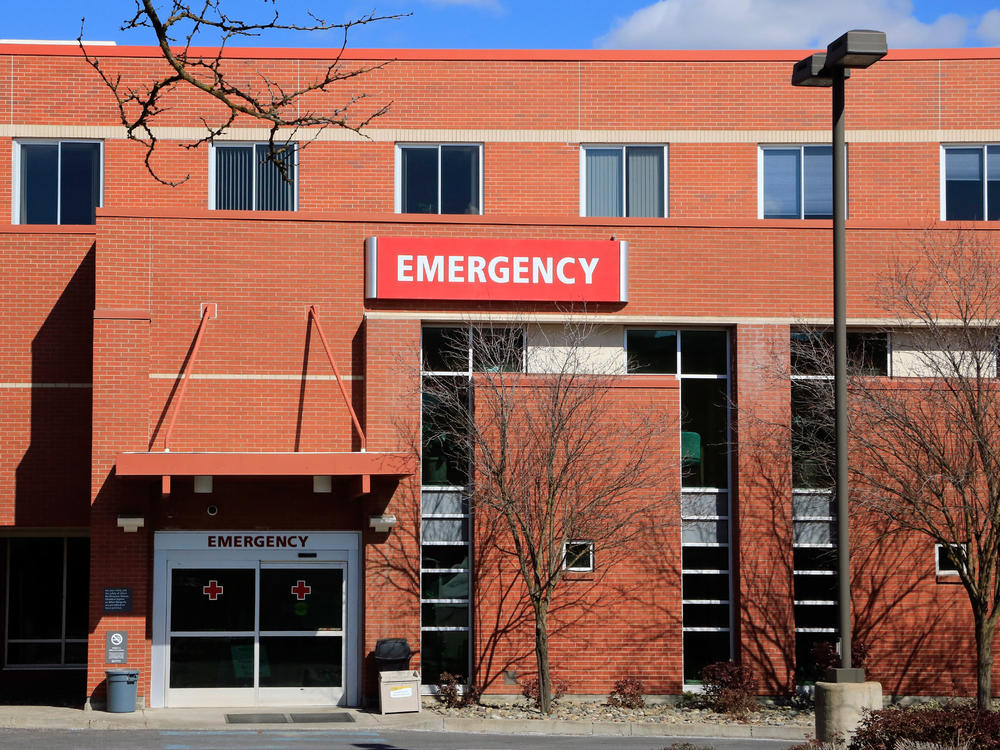Section Branding
Header Content
In rural America, patients are waiting for care — sometimes with deadly consequences
Primary Content
It had only been about six months since Katie Ripley finished radiation therapy for Stage 4 breast cancer. But now the 33-year-old was back in the hospital. This time, it wasn't cancer – she was still in remission – but she'd come down with a nasty respiratory infection.
It wasn't COVID, but her immune defenses had been weakened by the cancer treatments, and the infection had developed into pneumonia.
By the time Ripley made it to Gritman Medical Center, the local hospital in Moscow, Idaho, on January 6, her condition was deteriorating quickly. The illness had started affecting her liver and kidneys.
Her father, Kai Eiselein, remembers the horror of that night, when he learned she needed specialized ICU care.
"The hospital here didn't have the facilities for what she needed," he says. "And no beds were available anywhere."
Ripley didn't just need any bed. She needed a type of dialysis — known as continuous renal replacement therapy — that's used for critically ill patients, and is in high demand in hospitals treating a lot of COVID.
In normal times, she would have been flown to a larger hospital within hours. Like many rural hospitals, Gritman relies on being able to transfer patients to larger, better-equipped hospitals for care that it cannot provide — whether that's placing a stent after a heart attack or treating a life-threatening infection.
But hospitals all over the Pacific Northwest at the time were swamped with a surge of COVID-19 patients. And like health care systems in many parts of the country, the patient load means there's often nowhere to transfer even the most critical cases.
Katie Ripley had made it through months of cancer treatment — surgery, chemo and radiation– getting a new chance at life with her husband and two young kids. Her father was devastated to see her face a new crisis — worsened by overcrowding in the hospitals.
Ripley was his only child. She had followed him into journalism: he was a newspaper publisher and she became a reporter. "She was just a sweetheart, I don't think she had a mean bone in her body — a great mom, outstanding writer," Eiselein recalls.
While the hospital staff looked for an open bed, Eiselein was also on the phone with a friend who worked at a large hospital in Western Washington searching for a bed.
The hours went by and nothing opened up.
"Then it got to a point where it was pretty clear that, even if we found a bed, she probably wasn't going to make it," says Eiselein. "That was kind of a tough pill to swallow because you're trying so hard to save your kid's life — and you fail."
More than 20 hours later, Ripley died from sepsis in the emergency department at Gritman Medical Center.
Eiselein says there's no way to know if his daughter would have ultimately survived had she been moved to another hospital.
"But she never even had the chance," he says. "That's the thing that gets me."
Small rural hospitals — also known as critical access hospitals — have struggled with an influx of critically ill COVID-19 patients during the omicron surge. But they have fewer clinical resources, which means they've suffered disproportionately from the effects of a jammed-up health care system.
During the omicron surge, staff at small hospitals often have to scour the region for available beds while patients wait, making dozens and dozens of calls.
"Those are the nail biters, can you find a place for these people to go before their condition harms them?" says Dr. Lesley Ogden, CEO of Samaritan North Lincoln Hospital and Pacific Communities Hospital, two rural hospitals located on the Oregon coast.
While Gritman Medical Center would not comment specifically on Katie Ripley's case, spokesman Peter Mundt says that some days they're making calls all over the West — Washington, Oregon, Colorado, Montana and Utah — to find an open bed for a patient.
"Our nurses and our health supervisors are working phones like it's a commodity trading floor," says Mundt. The system for transferring patients, he says, "has been extremely stressed and extremely strained."
Knowing that a patient who needs a higher level of care is losing valuable time is painful for the nurses and doctors at the bedside.
"It does create more distress," says Mari Timlin, chief nursing officer at Gritman. "They feel we're not giving the exceptional care that any patient requires."
And in some cases, doctors have no choice but to come up with emergency workarounds. At her hospitals in Oregon, Ogden says they've had to perform surgeries that their support staff have never been trained to do.
"We're doing a risk analysis with the patient who could suffer a very bad outcome or even death, if we don't act," says Ogden. "If that means two surgeons coming together to do a job that normally takes one, can we just get everybody to pull together and save this patient?"
And even if a bed can be found, transportation can also be a problem, because ambulance companies have also been affected by the surge, says Dr. Donald Wenzler, chief clinical officer at Mid-Columbia Medical Center, a rural hospital about an hour and a half outside Portland, Oregon.
Most of those who are being hospitalized and dying during the omicron surge continue to be the unvaccinated. Their chance of being hospitalized is 16 times higher compared to the vaccinated, according to the latest data from the Centers for Disease Control and Prevention.
In Katie Ripley's death notice in the local paper, her father Kai Eiselein wrote about her love for her family, her high school athletic feats, and her career as a newspaper writer – the fifth generation in their family to embrace the profession.
And he wrote about her death, "surrounded by family members after spending more than 20 hours waiting for an ICU bed to open up somewhere in Idaho, Montana or Washington."
The second line of the notice was pointed: "There were no beds available, thanks to unvaccinated COVID-19 patients."
Eiselein's words got a lot of attention. He even got "hate mail," with some people writing him online and essentially calling him a liar. But overall the response has been sympathetic, he says.
After reading about his daughter, one friend of a friend even went out and got vaccinated the next day.
"No parent should ever have to watch their child take their last breath of life," he says. "The best way I can honor my daughter's life is to get the message out there to get vaccinated."
Around 3,000 people are still dying of COVID every day but other lives are being lost as well.
"I want people to understand it's not just the people getting COVID and ending up sick and even dying," says Eiselein. "They're not the only ones that are dying here."
Copyright 2022 NPR. To see more, visit https://www.npr.org.


